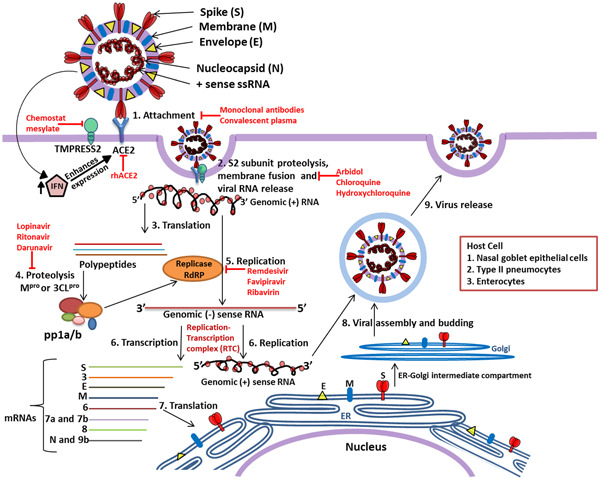Figure 6.

Replication cycle of SARS‐CoV‐2 and potential therapeutic target sites. The SARS‐CoV‐2 enters human body through nasal–oral route and in response to the virus, the body initiates innate response by producing interferons (IFNs); however, IFN activates expression of ACE2 protein which acts as receptor for virus attachment to host cell. Receptor‐binding domain (RBD) of S1 region of S protein interact with ACE2 which leads to proteolytic cleavage at the S1–S2 boundary and S2ʹ R815 site mediated by TMPRSS2 induces the viral and host cell plasma membrane fusion. The viral genomic single‐stranded RNA is translated by host machinery to produce viral polypeptide and these polypeptide undergo proteolytic cleavage by Mpro or 3CLpro synthesizing pp1a and pp1a/b. These polyproteins encode replication–transcription complex (RTC) which continuously replicates and produces a series of subgenomic messenger RNAs encoding the accessory and structural proteins. The viral genomic RNA and proteins are assembled to form the virus particles and buds in the ER and Golgi. Later, the virus containing vesicles fuse with plasma membrane of the host and release the viral particles out of the cell. The antiviral molecules with target sites are highlighted in red color
